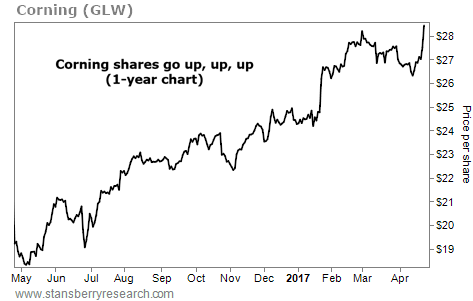| Home | About Us | Resources | Archive | Free Reports | Market Window |
This Common Strategy Could Be Quietly Ruining Your PortfolioBy
Wednesday, April 26, 2017
For decades, financial advisers have recommended putting 60% of your money in stocks and 40% in bonds. The conventional wisdom is that the safety and stability of bonds will protect you when stock prices fall.
Too many people believe stock and bond returns correlate negatively, meaning they reliably move in opposite directions.
But taking this tired advice could ruin you...
Christopher Cole at Artemis Capital Management – a hedge fund that specializes in volatility investing – busted the Wall Street "60/40 stock/bond" myth in an October 2015 research report called "Volatility and the Allegory of the Prisoner's Dilemma."
Cole looked at more than 132 years of data and discovered the correlation myth is false.
He writes, "The truth about the historical relationship between stocks and bonds is scary..."
Using data from 1885 through 2015, Artemis discovered that stock and bond prices have historically moved in the same direction roughly 70% of the time.
According to Artemis, it's only during the last two decades of falling interest rates and accommodative monetary policy that stocks and bonds have been negatively correlated. Otherwise, the firm reports, "Not only are stocks and bonds positively correlated most of the time, but also there is a precedent for multiyear periods whereby both have declined."
This might seem like a purely academic topic. Even Artemis admits the last 20 years have been pretty good, with bonds protecting investors when stocks sank.
But that's exactly the type of thinking that had investors in the early 2000s repeating, "Housing prices have never experienced an annual decline" – right up until the housing bubble blew up.
Nobody has any excuse for believing stock and bond prices can't fall at the same time... because that's what has happened 70% of the time going all the way back to 1885.
Artemis reports, "In the event stocks and bonds simultaneously lose value, the classic 60/40 will become a 100% loser..."
This kind of allocation can be particularly risky when the markets have been calm for a while...
The Volatility Index ("VIX") – the market's "fear gauge" – currently sits around 11.
That's historically low. And it suggests investors are incredibly complacent right now.
Meanwhile, since President Trump won the election, the S&P 500 has marched roughly 11% higher and is now trading around 25 times earnings.
The more expensive the market, the riskier it is. The lower the VIX, the less fear there is in the market. When both happen at the same time, like today, that's a bad combination...
When volatility stays low, the stock market road is smooth. But when the stock market finally hits its next bump in the road, volatility could soar higher than it typically would in a more volatile environment.
So it's prudent to prepare yourself for higher volatility. But don't count on the 60/40 stock/bond allocation to protect your portfolio...
For most investors, the best approach is to keep plenty of cash on hand.
Not only will that protect you from a market pullback, but it will also let you take advantage of bargains that pop up when the market falls and volatility soars.
The best, easiest, lowest-cost way to protect yourself from big drawdowns is to hold plenty of cash.
Let me be clear... I do not recommend selling all your stocks and going 100% to cash. That type of extreme approach guarantees you'll miss out on the compounding that has ruled the stock market for more than a century now.
It's simply far, far better to hold some cash and keep your capital safe than to watch your portfolio dwindle if the market suffers a correction.
Good investing,
Dan Ferris
Further Reading:
"Instead of relying on predictions, you can be ready for anything in the markets this year," Dan writes. Preparing your portfolio for a wide range of outcomes isn't easy... but these simple tips are a great way to get started. Learn more here: Five Ways to Prepare for Any Market Environment.
"You won't have to pick stocks anymore. They'll pick you!" Dan says. Great businesses tend to have a few characteristics in common. And one resource you may not have considered can help you identify these stand-out companies... Read more here: Three Clues for Finding Companies That Jump off the Page.
Market NotesA STRONG UPTREND IN THIS TECH INNOVATOR Today, we look at the impressive run higher in one of the world's most innovative technology companies...
We're talking about glassmaker Corning (GLW). You may not think about this company much... But its products are everywhere. Corning got its start making headlights, mirrors, and windshields. Then it made television tubes, and later transitioned to fiber-optic cables. And its "Gorilla Glass" is found in many high-end smartphones today, including Apple's iPhone.
Staying on top of the latest technology has helped Corning grow consistently. Since 2010, revenues are up 47%, while gross profits have risen 32%. The company has also raised its dividend for six straight years.
As you can see from the following chart, that steady, impressive growth has translated into big gains for shareholders. GLW shares are up more than 50% from their low in May, and they just touched their highest levels in almost nine years. Corning's innovations are essential to our technological world – and its market performance suggests it's a name you should keep an eye on...
 |
Recent Articles
|



